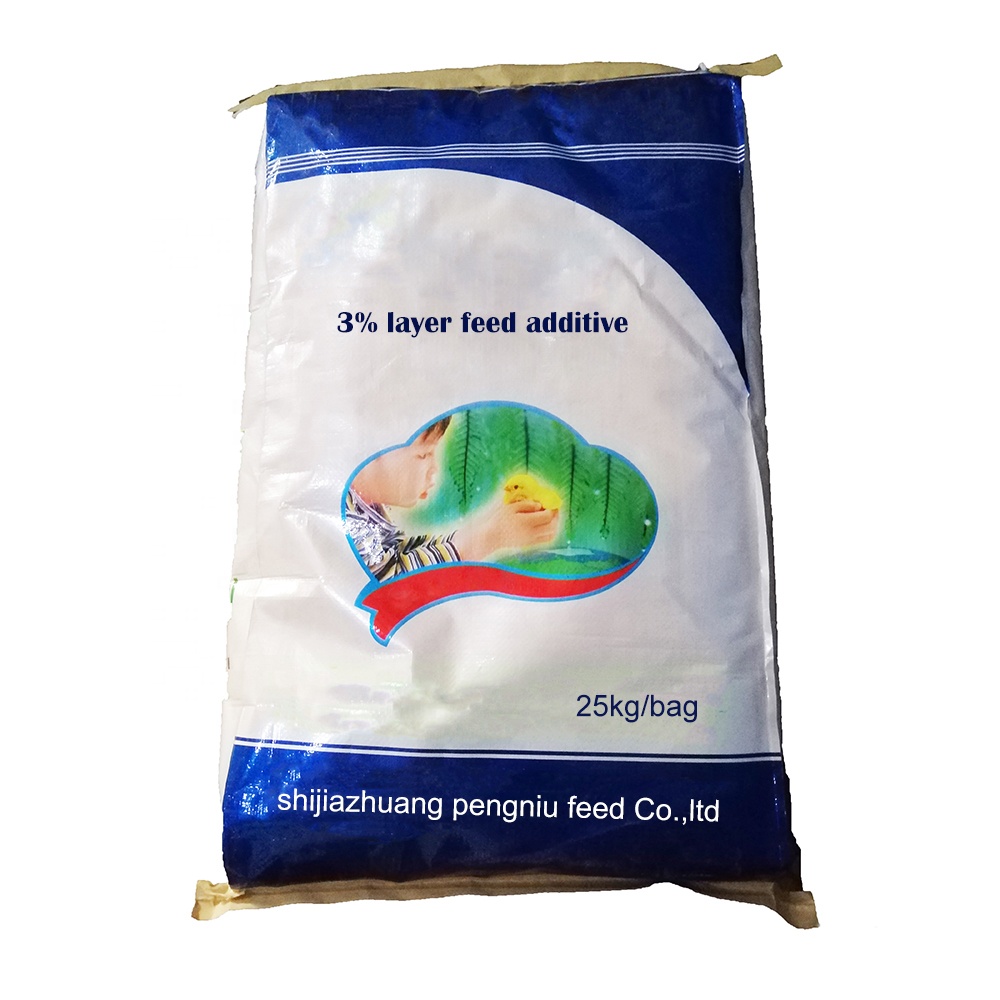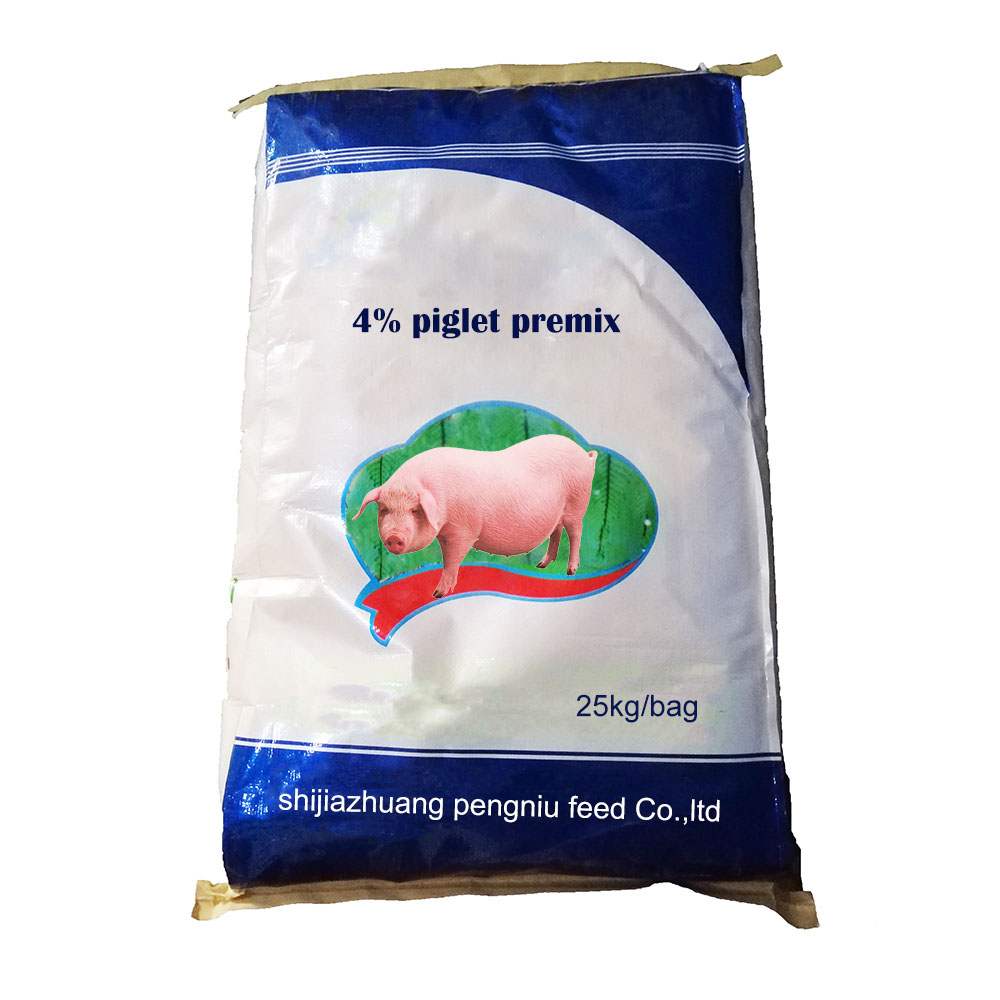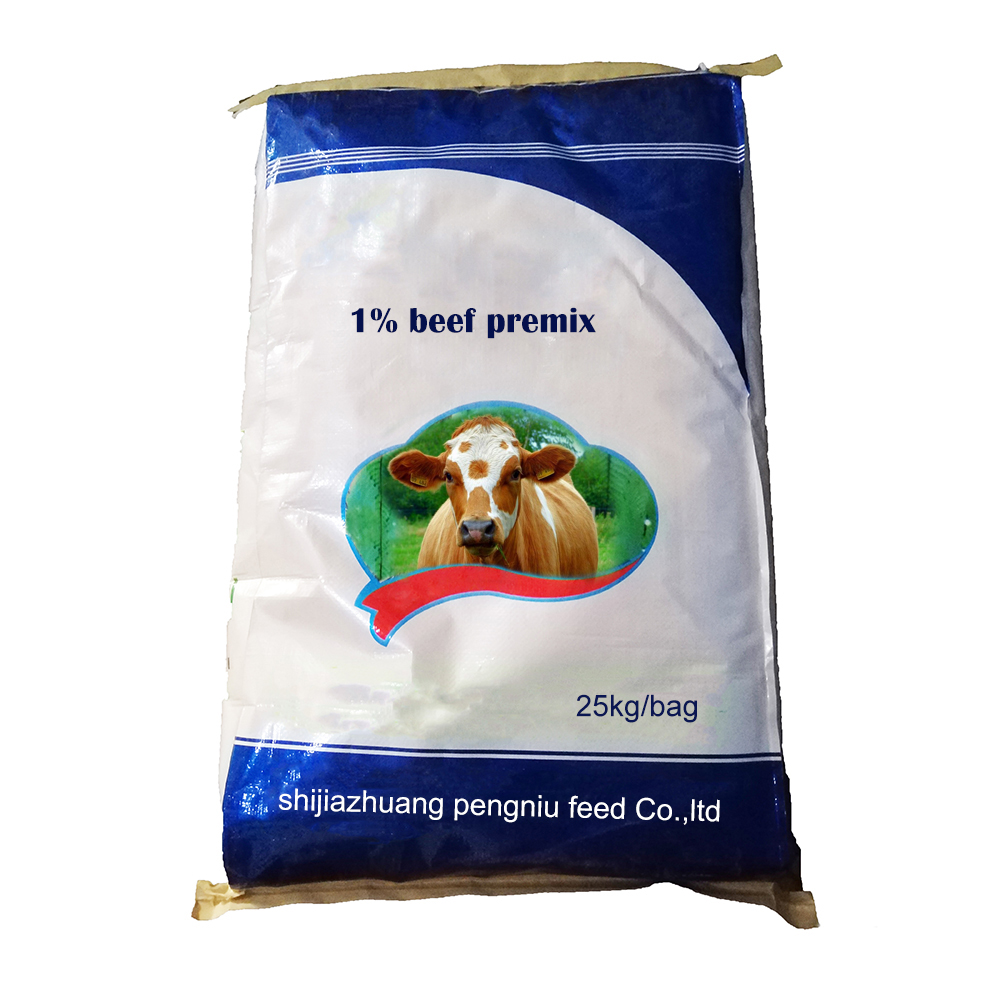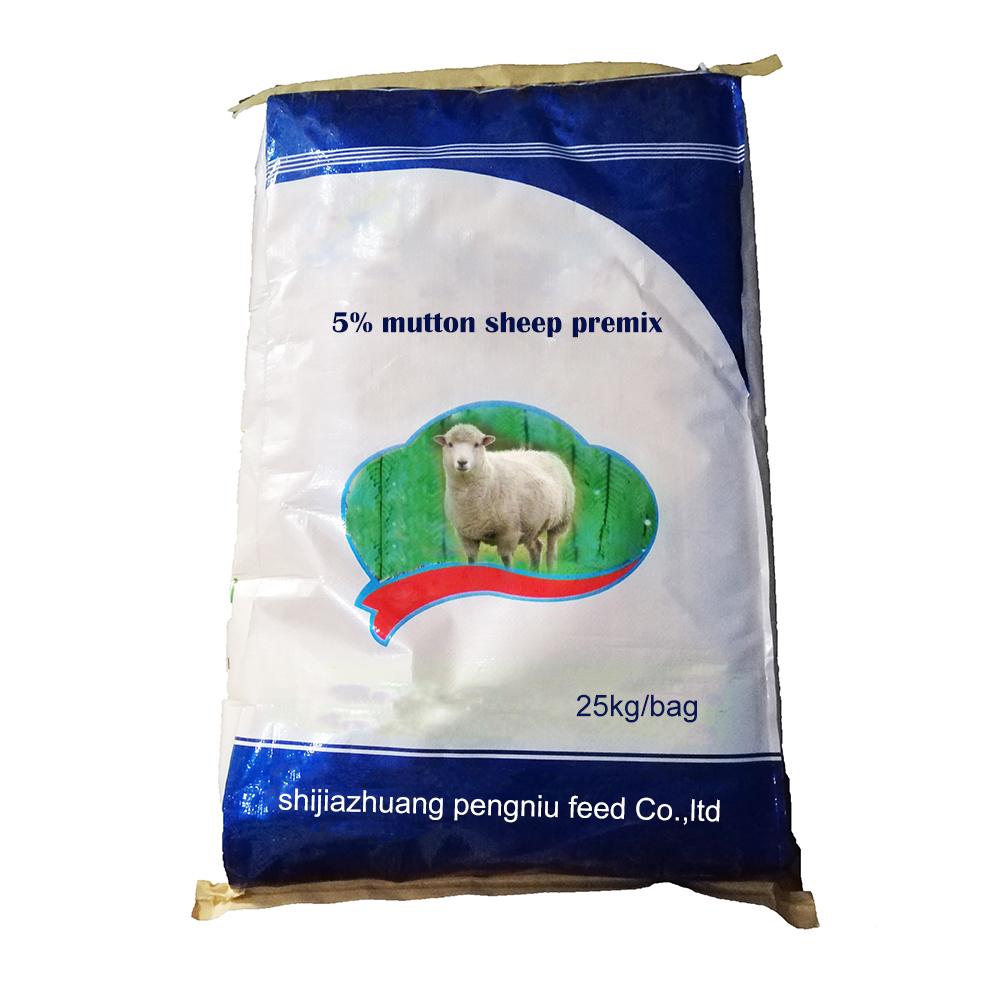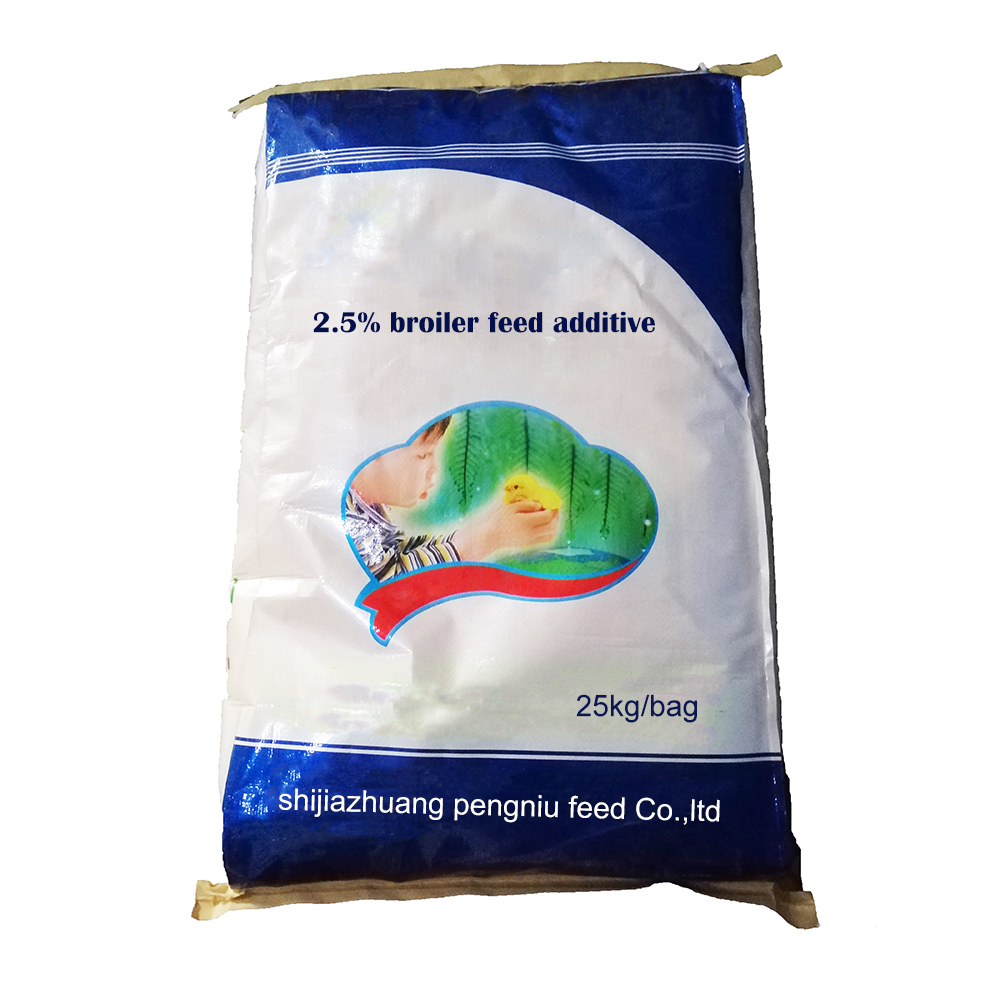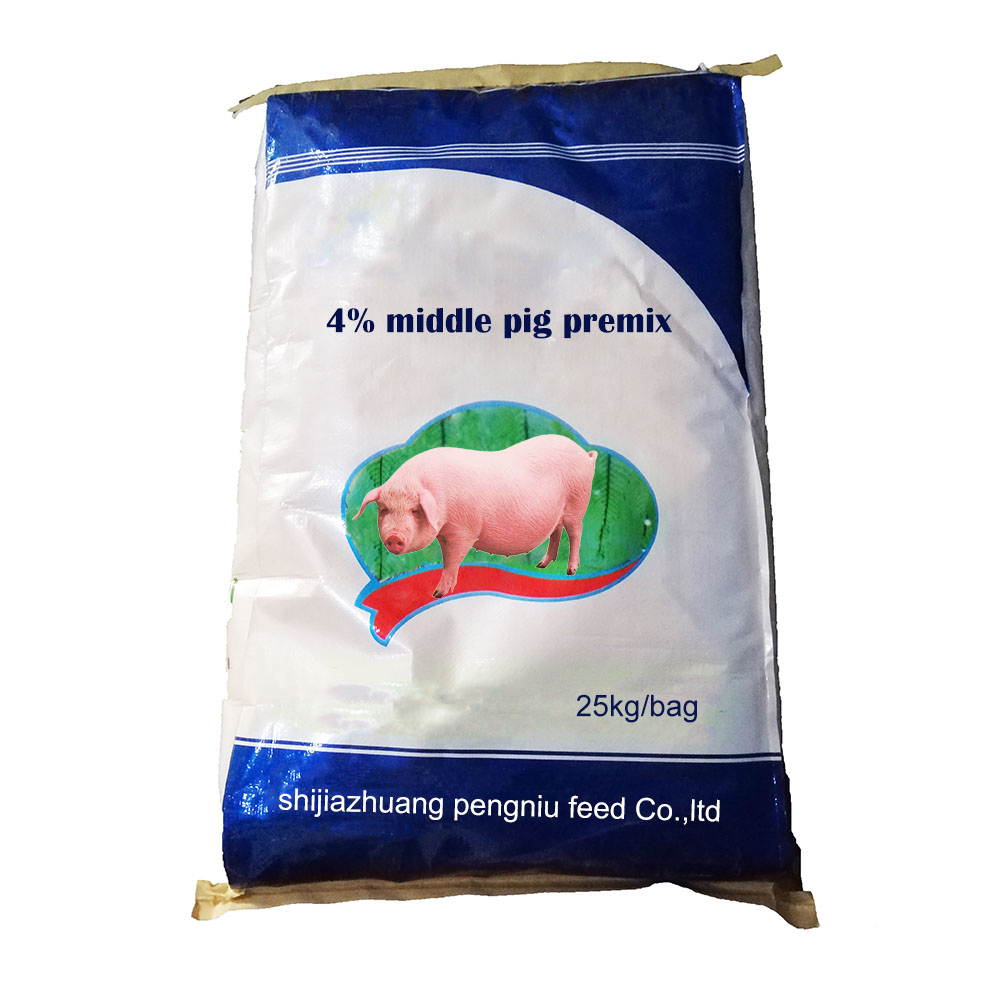Understanding Ivermectin Drench for Advanced Sheep Health Management
The strategic application of anthelmintic treatments is unequivocally paramount in modern ovine husbandry, forming a critical pillar of proactive flock health management designed to optimize productivity and ensure animal welfare. Among the diverse range of formulations available, ivermectin drench for sheep stands out as a highly effective broad-spectrum parasiticide, essential for controlling a wide array of internal and external parasites that significantly impair animal health, productivity, and ultimately, profitability. The global sheep farming industry continually grapples with persistent challenges posed by gastrointestinal nematodes (GINs), such as Haemonchus contortus (barber pole worm), Teladorsagia circumcincta (brown stomach worm), and various Trichostrongylus species, alongside significant threats from ectoparasites like sheep scab mites (Psoroptes ovis) and lice. These parasitic burdens can lead to a cascade of negative effects, including severe weight loss, compromised feed conversion efficiency, degradation of wool quality, reduced reproductive performance, and, in acute cases, substantial mortality rates. Such pervasive impacts necessitate a rigorous, scientifically informed, and adaptable approach to deworming, emphasizing the precise application of high-quality active pharmaceutical ingredients. Understanding the nuanced application of specific compounds, like Ivermectin, which targets the nervous and muscular systems of parasites, becomes indispensable for veterinary professionals and livestock managers striving for optimal flock performance and economic resilience. This section delves into the foundational role of Ivermectin drenches, particularly focusing on the 0.08% concentration, as a cornerstone in combating parasitic resistance and ensuring sustainable sheep farming practices by minimizing the selection pressure for resistance development when used correctly. It explores how targeted interventions with high-quality anthelmintics contribute not only to individual animal health and robust immune systems but also to the overall economic viability of agricultural enterprises, by safeguarding valuable livestock assets against the insidious, often silent, impact of parasitic infestations that can erode profitability over time. The precise management using effective ivermectin drench for sheep is a key differentiator for successful livestock operations, underscoring its pivotal role. The emphasis on precise dosing based on accurate body weight and strategic rotation of active ingredients is crucial to mitigate the widespread and escalating issue of drug resistance, thereby preserving the long-term efficacy of current treatments for future generations of sheep and sustaining the industry.
The dynamic landscape of veterinary parasitology is in a constant state of evolution, shaped by complex interactions between environmental factors, pathogen adaptation, and shifts in agricultural methodologies. Consequently, the unwavering demand for highly effective and reliable anthelmintic solutions, such as ivermectin drench for sheep, remains exceptionally robust, with an escalating emphasis on formulations that offer not only superior bioavailability but also enhanced safety profiles for both the treated animals and the operators. Current industry trends clearly indicate a strategic pivot towards more refined products that are designed to seamlessly integrate into comprehensive Integrated Parasite Management (IPM) programs. These holistic programs extend beyond mere chemical intervention, advocating for a synergistic combination of anthelmintic treatments with complementary non-chemical strategies, including judicious rotational grazing to disrupt parasite life cycles, genetic selection for inherent parasite resistance within flocks, and rigorous fecal egg count monitoring (FEC) to inform evidence-based treatment decisions. This multi-faceted approach aims to significantly reduce the overall reliance on anthelmintics while simultaneously maximizing their effectiveness when chemical intervention is truly warranted, thereby prolonging the useful life of existing drug classes. Furthermore, there is a burgeoning awareness among discerning producers regarding the critical importance of exclusively sourcing products from reputable manufacturers. These manufacturers distinguish themselves by adhering to the most stringent quality control protocols and Good Manufacturing Practices (GMP), ensuring unparalleled product consistency, purity, and efficacy from batch to batch. Such rigorous adherence is absolutely vital for achieving predictable and reliable outcomes in large-scale farming operations, where even minor variations in product quality can translate into substantial economic setbacks. The efficacy of ivermectin drench for sheep is closely tied to these advancements in manufacturing and quality control. Products like Ivermectin drench 0.08% are specifically engineered and meticulously formulated to meet these rigorous and evolving demands, providing a potent yet inherently safe option for routine parasite control, while maintaining stability across diverse environmental conditions encountered in farm settings. The informed selection of an appropriate drench must also meticulously consider the specific parasitic challenges and prevailing anthelmintic resistance patterns endemic to a given geographical region, as different species of nematodes and ectoparasites may exhibit varying sensitivities or resistances to different drug classes. Thus, a thorough and up-to-date understanding of the local epidemiology of ovine parasites is an absolutely essential prerequisite for making judicious, informed treatment decisions that contribute profoundly to long-term flock health, sustained productivity, and the enduring economic viability of the sheep enterprise.
The Advanced Manufacturing Process of High-Purity Ivermectin Drench
The production of a high-quality Ivermectin drench 0.08% for sheep is a sophisticated, multi-stage pharmaceutical process rigorously governed by cGMP (current Good Manufacturing Practices) to ensure uncompromising efficacy, purity, and safety for the target animal. This intricate journey begins with the meticulous sourcing and qualification of the active pharmaceutical ingredient (API), Ivermectin, which is typically derived through the complex fermentation of the filamentous bacterium Streptomyces avermitilis. This API must adhere to exceedingly stringent purity standards, often exceeding 99%, with impurities quantified at parts per million levels, as verified by an arsenal of advanced analytical techniques including High-Performance Liquid Chromatography (HPLC) for separation and quantification, and Mass Spectrometry (MS) for definitive molecular identification and impurity profiling. Upon its arrival at the manufacturing facility, each batch of API undergoes comprehensive incoming quality control checks, including identity verification, purity assessments, and potency assays, all meticulously conducted to confirm absolute compliance with globally recognized pharmacopeial standards such as the United States Pharmacopeia (USP), the British Pharmacopoeia (BP), or the European Pharmacopoeia (EP). The subsequent formulation stage demands unparalleled precision, involving the exact volumetric and gravimetric measurements of the Ivermectin API and a carefully selected suite of excipients. These excipients, which may include co-solvents (e.g., propylene glycol), stabilizing agents (e.g., antioxidants, pH adjusters), and preservatives, are not merely inert carriers; they are strategically chosen to ensure the long-term chemical stability of the active ingredient, optimize its dissolution and absorption kinetics for enhanced bioavailability in vivo, and facilitate ease of administration, such as controlling viscosity for smooth drenching. The mixing process, a critical step, is typically performed in state-of-the-art jacketed stainless steel reactors equipped with high-shear agitators, designed to create a vortex that ensures uniform dispersion of the API throughout the solvent system, thereby producing a perfectly homogenous drench that delivers consistent and accurate dosing with every administration. Crucially, maintaining strictly controlled temperature and pH parameters throughout this mixing stage is absolutely critical to prevent any potential degradation of the light- and oxygen-sensitive Ivermectin molecule, safeguarding its therapeutic integrity and extending its shelf life, which is essential for any ivermectin drench for sheep seeking optimal performance.
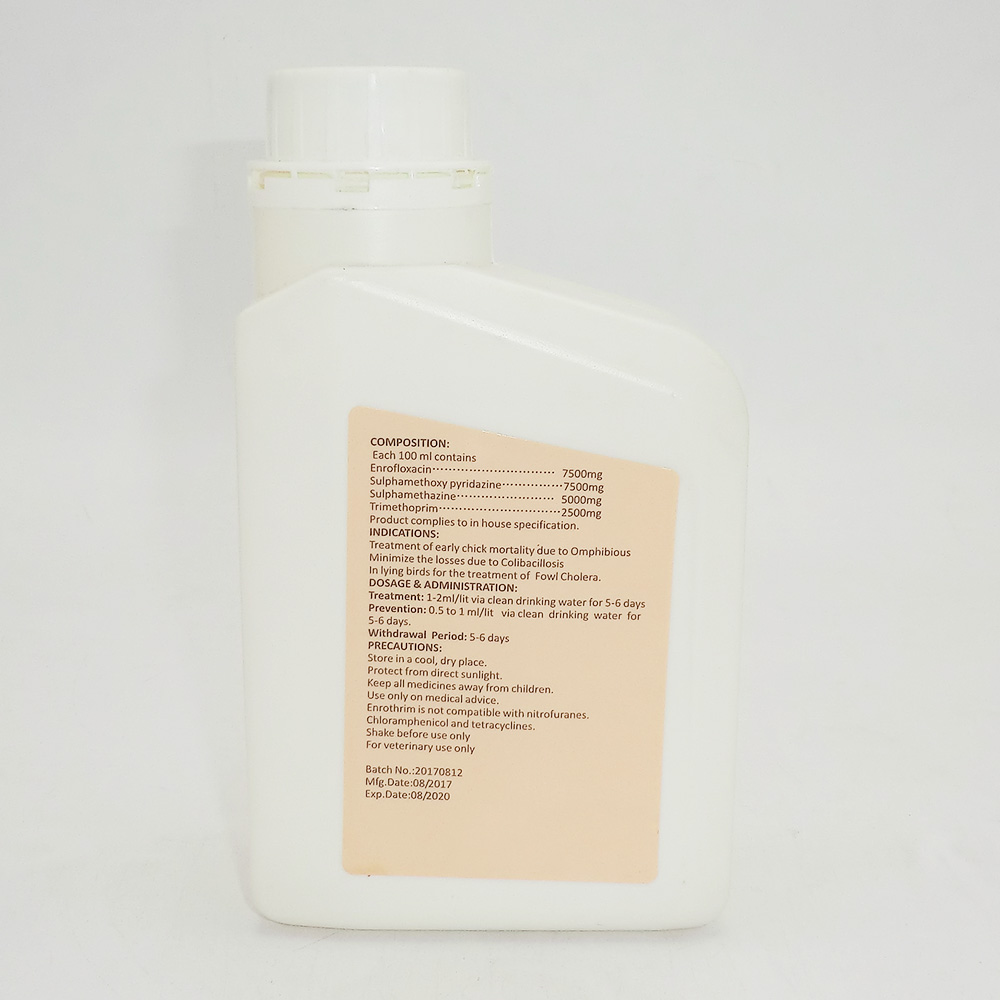
A glimpse into the rigorous production environment ensuring the quality of Ivermectin drenches.
Following the initial formulation and bulk mixing, the Ivermectin drench undergoes several critical stages of advanced filtration designed to meticulously remove any residual particulate matter and ensure the highest level of microbiological purity. This typically involves a meticulously orchestrated multi-stage filtration cascade, passing the solution through increasingly finer filter media, often culminating in aseptic or sterile filtration through 0.22-micron membranes. This final filtration step is performed within highly controlled, classified cleanroom environments (e.g., ISO Class 7 or Class 10,000) to prevent any potential environmental contamination, thereby guaranteeing the product's sterility and enhancing its stability over its designated shelf life. After this rigorous filtration, the bulk, sterile product is then transferred via closed systems to automated filling lines. Here, highly precise volumetric pumps or gravimetric filling systems accurately dispense the drench into pre-sterilized bottles, sachets, or other specified container111s. The entire filling process is conducted under stringent aseptic conditions, often within laminar flow hoods or isolators, to scrupulously maintain the sterility achieved during filtration, thereby preventing any microbial ingress. State-of-the-art capping and induction sealing machines then hermetically secure the container111s, ensuring product integrity, preventing leakage, and safeguarding against external contamination during subsequent storage, transportation, and distribution. Each manufactured batch undergoes an exhaustive battery of final quality control testing. This includes re-assays for Ivermectin concentration to confirm dosage accuracy, checks for pH, specific gravity, clarity, and, critically, sterility testing to confirm the absence of microbial growth. Furthermore, long-term and accelerated stability studies are systematically performed to scientifically determine the product's precise shelf life under various simulated environmental conditions, unequivocally guaranteeing its sustained efficacy and safety right up to the expiration date. Unwavering adherence to internationally recognized standards such as ISO 9001 for quality management systems and ISO 14001 for environmental management, alongside critical national and regional regulatory body approvals like those from the FDA (for veterinary drugs in the US) or the European Medicines Agency (EMA) in Europe, unequivocally signifies a manufacturer's profound commitment to excellence and product reliability. The advanced, precision-driven manufacturing processes employed collectively ensure that the ivermectin drench for sheep delivered to the global market is not only supremely effective against target parasites but also consistently safe, stable, and reliable for widespread use in diverse ovine populations, thereby supporting long-term herd health, optimizing production efficiency, and upholding the highest standards of animal welfare and environmental stewardship.
Technical Specifications and Performance Parameters of Ivermectin Drench 0.08%
The inherent effectiveness of any anthelmintic profoundly depends on its precise technical specifications and the controlled, predictable release of its active ingredient within the animal's system. For Ivermectin drench 0.08%, the specified concentration signifies a meticulous formulation containing 0.8 milligrams of Ivermectin per milliliter of solution, a potency carefully optimized through extensive research and development to ensure therapeutic efficacy against a broad and diverse spectrum of parasites, while concurrently maintaining a wide margin of safety for the treated animals. This specific concentration is not arbitrary; it is meticulously derived from comprehensive pharmacokinetic (what the body does to the drug) and pharmacodynamic (what the drug does to the body) studies. These studies are designed to achieve optimal peak plasma concentrations of Ivermectin that are sufficient to achieve a rapid and sustained kill of sensitive parasites, coupled with a persistent action that targets various developmental life stages of the parasites, including larvae and adult forms. Key performance parameters encompass its broad-spectrum efficacy against prevalent gastrointestinal roundworms such as Haemonchus contortus, Ostertagia circumcincta, various Trichostrongylus species, Nematodirus species, and Cooperia species. Furthermore, it effectively controls lungworms like Dictyocaulus filaria, nasal bots (Oestrus ovis), and a range of significant external parasites including sheep scab mites (Psoroptes ovis), biting lice (Bovicola ovis), and sucking lice (Linognathus ovillus). The formulation's physical properties, such as viscosity and palatability, are also meticulously controlled and optimized to facilitate easy, accurate, and stress-free oral administration to sheep, thereby minimizing spillage, reducing animal stress, and ensuring that the full, intended dose is ingested. This crucial aspect is paramount for achieving the desired therapeutic outcome and preventing underdosing, which can foster anthelmintic resistance. Additionally, the stability profile of the drench, including its optimal pH range (typically maintained between 3.5-5.5) and its inherent resistance to oxidative degradation, ensures a consistent and prolonged shelf life, commonly ranging from 24 to 36 months when stored under recommended conditions (e.g., protected from direct sunlight, kept below 25°C). These meticulously engineered technical attributes collectively underpin the reliable performance and sustained efficacy of the ivermectin drench for sheep across diverse farming environments and challenging climatic conditions, cementing its position as an indispensable and dependable tool in comprehensive parasite control programs designed for both preventative strategies and acute therapeutic interventions across various flock sizes and complex management systems. The consistent performance of a high-quality ivermectin drench for sheep is a hallmark of its value.
Ivermectin Drench 0.08% Product Specifications Overview
Beyond these fundamental core specifications, a comprehensive understanding of the strategic application scenarios for products such as priority care privermectin drench for sheep and generic privermectin drench for sheep is absolutely crucial for maximizing their inherent benefits within a robust parasite control program. This advanced understanding encompasses the implementation of sophisticated strategic deworming programs that are ideally informed by regular fecal egg count (FEC) monitoring, intelligent rotational grazing schemes designed to disrupt parasite life cycles and reduce pasture infectivity, and the judicious application of Targeted Selective Treatment (TST) approaches for individual animals based on clinical signs or performance metrics. The technical advantages inherent in a meticulously formulated Ivermectin drench, particularly the 0.08% concentration, are multifaceted and significant. These include its high efficacy against both mature adult stages and various immature larval stages of sensitive parasites, ensuring a thorough kill. Furthermore, its relatively rapid onset of action allows for quick resolution of clinical signs and reduction of egg shedding, limiting environmental contamination. A notable attribute is its wide therapeutic index, signifying a substantial safety margin between the effective therapeutic dose and a potentially toxic dose, thus enhancing safety for the animals and reducing the risk of adverse reactions even with slight dosing inaccuracies. Moreover, the versatility of Ivermectin enables its seamless integration into diverse parasite control strategies, crucially including those specifically aimed at preventing or delaying the development of anthelmintic resistance through strategic rotational use with other distinct drug classes (e.g., benzimidazoles, levamisoles). For instance, in geographical regions where widespread resistance to these older drug classes is prevalent, Ivermectin can serve as an invaluable and highly effective alternative, breaking the cycle of resistance. The minimal environmental impact of the product when used strictly as directed, particularly concerning non-target organisms in pasture ecosystems, is yet another compelling advantage, significantly contributing to the overarching goals of sustainable and environmentally responsible farming practices. These combined technical advantages collectively underscore why Ivermectin drench 0.08% consistently remains a preferred and indispensable choice for a vast majority of sheep producers globally, offering a robust and reliable solution for maintaining optimal animal health and maximizing production efficiency, all while expertly navigating the increasing complexities of parasite control in modern, intensive agricultural systems, further cementing the role of ivermectin drench for sheep.
Strategic Application and Manufacturer Comparison in the Ovine Health Sector
The effective and sustainable application of ivermectin drench for sheep transcends the simple act of product administration; it necessitates a sophisticated, strategic approach seamlessly integrated into comprehensive flock health plans designed for long-term parasite management and productivity. Typical application scenarios are multifaceted and tailored to specific agricultural contexts and seasonal parasite burdens. These often include routine prophylactic treatments administered during critical physiological periods for the flock, such as before lambing to reduce the parasite burden on ewes and minimize subsequent transmission to highly susceptible newborn lambs, or during weaning to protect young, vulnerable animals as they transition to new diets and environments. The drench is also extensively utilized as a precise therapeutic intervention when overt clinical signs of parasitism are observed within the flock, or when regular fecal egg count (FEC) monitoring unequivocally indicates a significant, economically damaging worm burden requiring immediate action. Furthermore, strategic seasonal treatments are common in regions characterized by distinct warm and cold seasons, specifically targeting the life cycles of prevalent parasites. For instance, a judicious pre-winter drench can significantly reduce the population of overwintering larvae on pasture, thereby mitigating the parasite challenge in the subsequent spring. Conversely, a carefully timed spring drench targets emerging parasite populations, preventing their proliferation. In cases of significant outbreaks of external parasites, such as the highly contagious sheep scab caused by Psoroptes ovis, a targeted and swift treatment with a high-quality Ivermectin drench is frequently the first and most effective line of defense, rapidly mitigating spread and alleviating animal suffering. The inherent ability of the 0.08% Ivermectin formulation to rapidly achieve optimal drug concentrations in the blood and peripheral tissues makes it particularly advantageous for a quick and decisive response to acute infestations, thereby limiting substantial economic losses associated with impaired feed conversion, significant weight loss, compromised wool quality, and increased susceptibility to secondary infections. Moreover, its compatibility with other essential veterinary interventions, such as routine vaccination programs, ensures that comprehensive sheep health protocols can be seamlessly streamlined and executed without compromising the efficacy of either the anthelmintic treatment or the immune response to vaccines, promoting overall herd resilience and robust health with ivermectin drench for sheep as a foundational component.
Comparative Analysis: Key Features of Leading Ivermectin Drenches
When meticulously evaluating and selecting manufacturers in the highly competitive veterinary pharmaceutical market, distinguishing factors extend far beyond mere baseline product specifications to encompass a much broader and more profound array of considerations, including overarching aspects of service provision, comprehensive quality assurance frameworks, and demonstrable adaptability to evolving client needs. While numerous suppliers may indeed offer a version of priority care privermectin drench for sheep or a comparable generic privermectin drench for sheep, it is the unwavering commitment to consistent product quality, the execution of rigorous and transparent batch testing, and the provision of truly comprehensive technical support that unequivocally sets leading manufacturers apart in this specialized domain. Our Ivermectin drench 0.08% is produced exclusively in state-of-the-art facilities that adhere to the most exacting international cGMP (current Good Manufacturing Practices) standards, thereby ensuring that every single batch manufactured not only meets but frequently surpasses stringent regulatory requirements and pharmacopeial standards. This steadfast commitment to uncompromising quality translates directly into a pharmaceutical product with highly predictable performance characteristics, an attribute of critical importance for large-scale commercial farming operations where even minor variations in drug efficacy can translate into substantial economic losses, compromised animal welfare, and potential acceleration of anthelmintic resistance. Furthermore, our unparalleled capability to provide highly customized solutions, whether it involves offering specific bulk packaging sizes that align with large-scale farm requirements, proposing minor formulation adjustments for unique regional epidemiological needs (though the 0.08% concentration is broadly standard and highly effective), or assisting in the development of integrated parasite management plans, offers unparalleled value and strategic advantage to our discerning B2B clientele. Unlike many generic suppliers who might prioritize aggressive cost-cutting measures over fundamental product quality and scientific rigor, a truly reputable manufacturer consistently invests substantial resources into continuous research and development. This ongoing investment is dedicated to refining product stability, enhancing ease of administration, and demonstrably improving overall anthelmintic efficacy, thereby consistently offering a superior return on investment for progressive livestock producers. This far-sighted, long-term perspective ensures that our valued partners receive not just a mere product, but a reliable, scientifically validated, and strategically integrated solution, robustly backed by unparalleled scientific expertise and dedicated, responsive support, thereby fostering enduring trust and ensuring the long-term sustainability and profitability of their sheep farming endeavors within a challenging global agricultural landscape, further solidifying the indispensable role of ivermectin drench for sheep.
Ensuring Trust and Authority: Client Success Stories and Support
Building and maintaining profound trust and demonstrating unquestionable authority in the highly regulated and critical veterinary pharmaceutical sector is absolutely paramount, especially when dealing with essential animal health products like privermectin drench for sheep. Our extensive service history, spanning well over two decades in providing advanced animal health solutions globally, fundamentally underscores our deep-seated expertise, unwavering commitment to product quality, and consistent reliability within the industry. We proudly hold a comprehensive suite of internationally recognized industry certifications, including the highly esteemed ISO 9001 for robust quality management systems and an FDA-compliant manufacturing facility registration, which collectively serve to unequivocally affirm our steadfast adherence to the most exacting international standards for pharmaceutical production and quality control. Furthermore, our strategic partnerships with leading veterinary research institutions, prominent agricultural universities, and respected industry consortia ensure that our continuous product development efforts remain at the absolute forefront of scientific innovation. This collaborative approach allows us to integrate the very latest breakthroughs in parasite biology, anthelmintic pharmacology, and advanced resistance management strategies directly into our formulations and recommendations. For instance, a particularly compelling client success story involved a large-scale commercial sheep farm located in a challenging region of rural Australia. This farm had been grappling with a severe and persistent issue of Haemonchus contortus resistance, a notoriously pathogenic nematode, to multiple traditional anthelmintic classes, leading to significant productivity losses. After engaging with our expert veterinary team and diligently implementing a meticulously tailored parasite management program that strategically incorporated our Ivermectin drench 0.08% as an integral part of a rotational treatment regimen, coupled with regular fecal egg count reduction tests (FECRTs) to monitor efficacy, the farm experienced a dramatic and verifiable turnaround. Over two subsequent lambing seasons, they observed a statistically significant decrease in the overall parasitic burden across the flock, alongside a notable and measurable improvement in various key performance indicators, including an impressive average 15% increase in lamb weaning weights. This tangible and quantifiable outcome vividly highlights the profound practical benefits of choosing a product that is not only backed by robust scientific validation and authoritative certifications but also consistently demonstrates exceptional real-world performance under demanding field conditions, delivering measurable economic advantages to our agricultural partners, solidifying the choice of ivermectin drench for sheep.
Our unwavering commitment to ensuring comprehensive client success extends far beyond the mere delivery of our premium products; it encompasses a holistic partnership model that provides unparalleled post-sales support, highly customized solutions, and steadfastly transparent operational practices. We possess a profound understanding that truly effective and sustainable parasite control demands more than just a potent chemical agent; it necessitates an enduring collaborative relationship that consistently provides proactive, ongoing technical advice, sophisticated diagnostic interpretation, and expert problem-solving capabilities for the complex challenges inherent in livestock management. Our dedicated team of highly experienced veterinary support professionals is readily available to assist clients with a wide array of services, including the development of bespoke deworming protocols precisely tailored to their specific farm conditions, the accurate interpretation of complex diagnostic results (such as FEC data), and expert guidance in navigating the increasingly intricate and challenging landscape of anthelmintic resistance issues. Regarding logistics, the typical delivery cycle for bulk orders of ivermectin drench for sheep is meticulously managed and executed with exceptional efficiency, generally ranging from 7 to 14 business days. This timeframe is strategically dependent on factors such as the specific geographical location of the client and the overall volume of the order, facilitated by our robust and globally integrated logistics networks that ensure timely and secure product transit. We underpin all our offerings with a robust and unequivocal quality assurance commitment, guaranteeing the precise potency, unblemished purity, and consistent efficacy of our products strictly as per their label claims, backed by comprehensive batch records. In the exceptionally rare and unlikely event of a product efficacy concern or any technical query, our responsive technical specialists are primed to conduct thorough and impartial investigations, providing rapid and effective resolutions to minimize any potential disruption to farm operations. Furthermore, for clients actively seeking highly bespoke solutions, we engage in detailed and collaborative consultations to deeply understand their unique challenges. This might involve tailoring strategies to specific regional parasite prevalence data, adapting protocols for distinct sheep breed requirements, or seamlessly integrating our products into existing advanced farming technologies. This ensures that our comprehensive range of products and expert services align perfectly with their intricate operational needs and overarching strategic objectives, forging a powerful and enduring foundation of trust that is absolutely crucial for sustained, mutually beneficial partnerships in the dynamic and vital B2B agricultural sector. The optimal application of ivermectin drench for sheep requires this level of dedicated support.
Frequently Asked Questions (FAQ)
Q1: What is the recommended dosage for Ivermectin drench 0.08%?
A1: The standard recommended dosage for Ivermectin drench 0.08% is typically 2.5 mL per 10 kg of body weight for sheep. It is of utmost importance to accurately weigh animals using appropriate scales and to utilize a properly calibrated drenching gun or applicator to ensure the precise delivery of the correct dose. Underdosing can critically lead to reduced treatment efficacy, allowing parasites to survive and potentially contributing to the rapid development of anthelmintic resistance within the flock, rendering future treatments less effective. Conversely, overdosing, while less common, can pose unnecessary safety risks to the animals. Always consult the specific product label for the most up-to-date and region-specific dosing instructions, withdrawal periods, and contraindications. For optimal results and to tailor a deworming strategy, it is strongly advised to consult with a qualified veterinary professional regarding the proper use of ivermectin drench for sheep.
Q2: How often should I administer Ivermectin drench to my flock?
A2: The optimal frequency of administration for Ivermectin drench is highly variable and depends on a complex interplay of factors, including the specific local parasite challenge (e.g., prevalence of Haemonchus contortus), prevailing environmental and climatic conditions, existing grazing management practices, and, most critically, the results obtained from regular fecal egg count monitoring (FEC). In general, strategic treatments are often recommended at key physiological times for the sheep, such as pre-lambing, pre-weaning, or during specific seasonal periods when parasite burdens are predictably high. However, the modern paradigm strongly advocates for the implementation of an Integrated Parasite Management (IPM) plan, meticulously developed in close consultation with a veterinary professional or livestock consultant. This approach aims to avoid the indiscriminate and frequent overuse of anthelmintics, which can significantly accelerate the development of drug resistance. Targeted Selective Treatment (TST) where only animals identified as having high worm burdens are treated, is also increasingly promoted as part of sustainable parasite control, optimizing the impact of ivermectin drench for sheep.
Q3: What are the main benefits of using an Ivermectin drench compared to other anthelmintic classes?
A3: Ivermectin, as a representative of the macrocyclic lactone (ML) class of anthelmintics, offers a distinctive set of benefits compared to other drug classes like benzimidazoles (e.g., albendazole) or levamisoles. Its primary advantage is its broad-spectrum efficacy, providing robust control against a very wide range of both internal parasites (gastrointestinal and lungworms) and important external parasites (mites, lice, nasal bots). Its unique mode of action involves interfering with the nervous and muscular systems of parasites by enhancing GABA-mediated chloride ion influx, leading to flaccid paralysis and death. This distinct mechanism makes it effective against many parasite strains that may have developed resistance to other chemical classes. It also typically boasts a good safety profile for treated animals when administered correctly and can provide a period of persistent activity against certain sensitive parasites. However, it is critically important to use Ivermectin judiciously and strategically rotate it with other anthelmintic classes to preserve its long-term effectiveness and to mitigate the ongoing threat of anthelmintic resistance, which is a significant concern globally, making the selection of a high-quality ivermectin drench for sheep paramount.
Authoritative References
- World Organisation for Animal Health (OIE). (2023). Manual of Diagnostic Tests and Vaccines for Terrestrial Animals. Chapter 2.3.9. Ovine Scab (Psoroptes ovis).
- American Association of Veterinary Parasitologists (AAVP). (2022). Guidelines for the Diagnosis, Treatment, and Control of Parasites in Small Ruminants.
- International Scientific Committee on Fecal Egg Count Reduction Test (ISC-FECRT). (2021). Recommendations for the use of FECRT in monitoring anthelmintic resistance in ruminants.
- United States Pharmacopeial Convention (USP). (2023). USP Monographs for Ivermectin.
- Council on Animal Health, American Veterinary Medical Association (AVMA). (2020). Antimicrobial Resistance and Stewardship in Veterinary Medicine.
Post time: August 17, 2025

